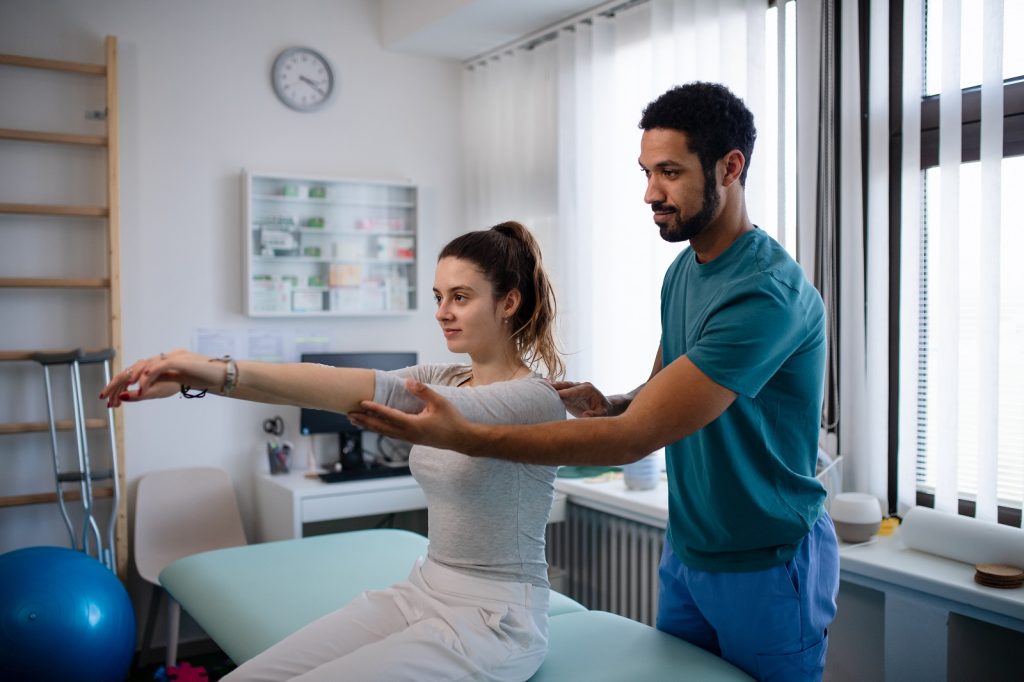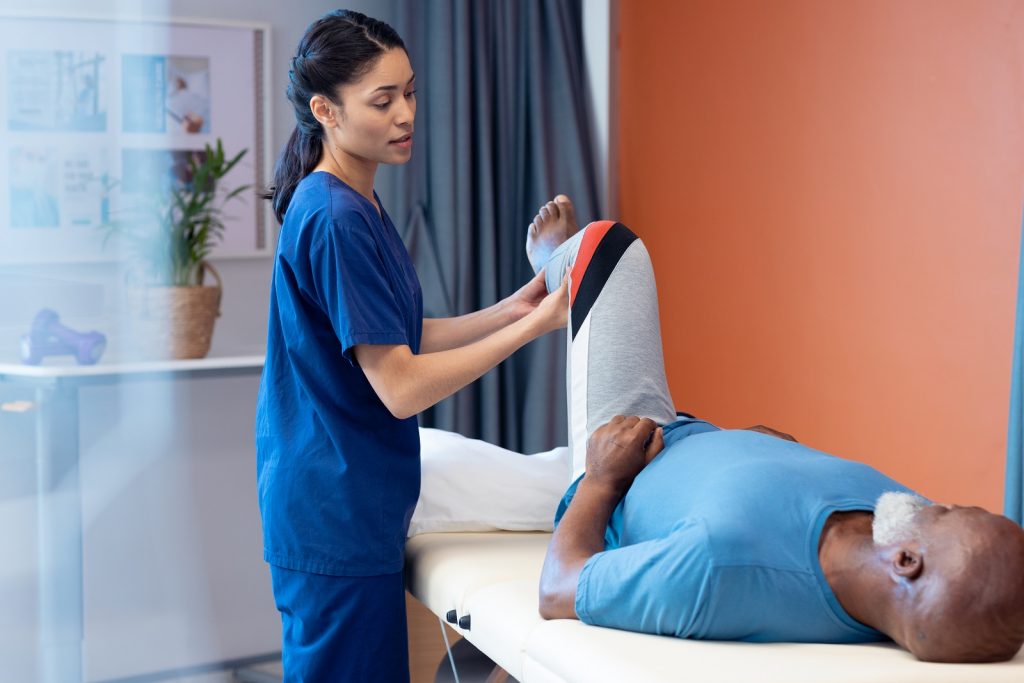Manual Therapy
Manual therapy is a cornerstone of physical rehabilitation and pain management, offering a hands-on approach to treatment that has been utilized for centuries. Despite the advances in medical technology, the foundational principles of manual therapy remain highly effective, providing relief and improving function for countless individuals.
What is Manual Therapy?
Manual therapy encompasses a variety of techniques performed by skilled practitioners, primarily physical therapists, chiropractors, and osteopaths. The core of manual therapy lies in the application of controlled pressure and movement to manipulate muscles, joints, and soft tissues. The goal is to alleviate pain, enhance mobility, and promote overall well-being.
Joint Mobilization and Manipulation
Joint mobilization and manipulation are techniques used to restore the normal range of motion in joints. Mobilization involves slower, controlled movements that gently move the joint within its natural range, making it suitable for patients who may have a lower pain tolerance or are in the early stages of rehabilitation.
Manipulation, on the other hand, consists of quick, precise movements aimed at correcting misalignments or restrictions in the joint. This technique is often used to provide immediate relief from pain and to improve joint function.

Soft Tissue Techniques
Soft tissue techniques encompass a variety of methods aimed at treating muscles, tendons, and connective tissues. This includes:
- Massage: Various styles of massage are used to relax muscle tension and improve circulation.
- Myofascial Release: This technique targets the fascia (the connective tissue surrounding muscles) to reduce tightness and improve movement.
- Trigger Point Therapy: This involves applying pressure to specific points in the muscle that are causing pain (trigger points) to relieve tension and discomfort.
These techniques work by breaking down scar tissue, enhancing blood flow, and reducing muscle tension, thereby promoting healing and reducing pain.
Muscle Energy Techniques (METs)
Muscle Energy Techniques (METs) are a form of manual therapy where the patient actively uses their muscles from a precise position and in a specific direction against a counterforce provided by the therapist. This technique helps in:
- Lengthening Shortened Muscles: By engaging the muscle, it helps to stretch and lengthen muscles that have become shortened due to injury or disuse.
- Strengthening Weak Muscles: The controlled resistance can help build strength in muscles that are weak.
- Improving Joint Function: By working the muscles around a joint, METs can help improve the range of motion and function of the joint.
Strain-Counterstrain
Strain-counterstrain is a gentle, passive technique where the therapist identifies tender points in the muscle and positions the patient in a way that reduces discomfort. The therapist then applies mild pressure to these points. This technique is effective for:
- Addressing Tender Points: These are hyper-irritable spots in the muscle that are painful when compressed.
- Relieving Muscle Spasms: By positioning the body to reduce tension and applying gentle pressure, muscle spasms can be alleviated, leading to a reduction in pain and improved muscle function.
This method is particularly useful for patients who have acute pain or are sensitive to more aggressive forms of therapy.
Benefits of Manual Therapy
Manual therapy offers a wide range of benefits, making it a highly effective treatment option for various musculoskeletal conditions. Here are some of the primary benefits:
- Pain Relief: One of the most significant benefits of manual therapy is its ability to reduce pain. Through the skilled manipulation of muscles and joints, therapists can address the underlying causes of pain, such as muscle tension, joint dysfunction, and nerve irritation. By targeting these issues, manual therapy provides significant and often immediate pain relief, helping patients return to their daily activities with less discomfort.
- Improved Mobility: Manual therapy is highly effective in restoring movement in joints that have become stiff or restricted due to injury, surgery, or chronic conditions. Techniques such as joint mobilization and manipulation help increase the range of motion and flexibility, allowing patients to move more freely and comfortably. This improved mobility is particularly beneficial for individuals recovering from injuries or surgeries, as it aids in the rehabilitation process and enhances overall functional performance.
- Enhanced Circulation: Techniques like massage and myofascial release used in manual therapy improve blood flow to the treated areas. Enhanced circulation accelerates the healing process by delivering essential nutrients and oxygen to tissues and removing metabolic waste products. This improved blood flow also helps reduce inflammation and swelling, which are common sources of pain and discomfort.
- Stress Reduction: The therapeutic touch involved in manual therapy has a calming effect on the nervous system. By reducing muscle tension and promoting relaxation, manual therapy helps lower stress levels and induce a sense of well-being. This stress reduction can be particularly beneficial for patients dealing with chronic pain or conditions exacerbated by stress, as it contributes to overall mental and physical health.
- Personalized Care: One of the unique advantages of manual therapy is its highly individualized approach. Therapists tailor their techniques to meet the specific needs and conditions of each patient, ensuring the most effective and appropriate treatment. This personalized care allows for adjustments based on the patient’s progress and response to treatment, leading to better outcomes and satisfaction.
The Science Behind Manual Therapy
Research supports the effectiveness of manual therapy for a variety of conditions, including chronic low back pain, neck pain, and certain types of headaches. Studies have shown that manual therapy can lead to significant improvements in pain and function, often with fewer side effects compared to pharmaceutical interventions.
The mechanisms behind manual therapy’s effectiveness are multifaceted. They include mechanical effects such as breaking down adhesions and improving tissue elasticity, as well as neurophysiological effects like modulating pain perception and enhancing the body’s natural healing processes.

Manual therapy remains a vital and effective component of modern healthcare. Its hands-on approach offers numerous benefits, from pain relief and improved mobility to enhanced overall wellness. Whether you are dealing with an acute injury or chronic pain, manual therapy can provide a path to recovery and a return to a more active, pain-free life.
Contact Us
Feel free to contact Dr. Burhan to book a consultation and discover how manual therapy can benefit your health. Dr. Burhan and his experienced team provide personalized care and advanced manual therapy techniques to help you achieve optimal health and well-being. Reach out today to take the first step towards a pain-free and active life.


